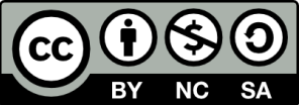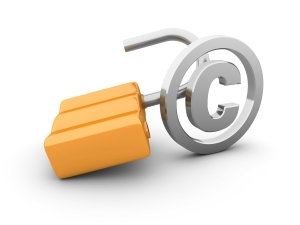
January 1 is always Public Domain Day – a wonderful holiday for library people across the country!!
What is Public Domain Day? So happy you asked!
In the United States, our copyright laws are…restrictive. (Terrible. Run by Disney and other big corporations. These are other potential descriptors – but they are more reflective of my personal opinions. So I’m just going to say “restrictive” for our purposes here.)
They keep material out of the public domain for extended amounts of time. You can find out if any published materials are in the public domain, or whether they are protected by copyright, right here on this handy Digital Copyright Slider. A quick browse over this will show you whether the material you are looking at is available to use, or when it will enter the public domain. (It’s so handy!)
And this is a banner year for advocates of using copyrighted material! In 1998, we were supposed to get material from 1923 to use, after their 75-year copyright expired. Sadly, Congress decided that bowing to the corporate interests of companies such as Disney (gotta be worried about The Mouse!) was more important than sharing material freely with everyone. And they extended the protection on material from 1923 to 1977 for an additional 20 years.
But!! Here we are!! A mere NINETY-FIVE YEARS LATER!! And for the first time in twenty years, we have some good stuff entering into the public domain!!
What does this mean to you?? Well, first off: all the books in this new classification can be shared at no cost, and with no restrictions, with your patrons. Check out Project Gutenberg for some great, FREE, access to all kinds of ebooks available in the public domain. Link to this on your website! Add them to your catalog! Download them and hand them out on street corners! It’s all perfectly legal!!!!
[*tossing handfuls of confetti around the office to celebrate*]
Movies can be shown to your patrons – anytime, as often as you want, and without a single permission slip or fee paid to anyone!!
Posters can be downloaded, printed, and put up all over the library, given away as prizes, or anything else that sounds fun to you!
And, okay, yes. This stuff is 95 years old. Star Wars will not enter the public domain until long after all of us are dead, so forget having access to that kind of stuff.
“Unfortunately, the fact that works from 1923 are legally available does not mean they are actually available. Many of these works are lost entirely or literally disintegrating (as with old films and recordings), evidence of what long copyright terms do to the conservation of cultural artifacts. For the works that have survived, however, their long-awaited entry into the public domain is still something to celebrate.”
But!!
There are a lot of good things here that you can share freely with your patrons now. You have heard of a lot of these, and there will be no sadness at all in sharing them with the public.
Here are a few things, from the Duke University Center for the Study of the Public Domain. (This is THE spot to go for copyright questions and education!)
Books:
- Edgar Rice Burroughs, Tarzan and the Golden Lion
- Agatha Christie, The Murder on the Links
- Winston S. Churchill, The World Crisis
- e.e. cummings, Tulips and Chimneys
- Robert Frost, New Hampshire (For Robert Frost fans, this collection of poetry includes “Stopping by Woods on a Snowy Evening” – one of my favorites!! Type it up and share it with friends!!)
- Kahlil Gibran, The Prophet
- Aldous Huxley, Antic Hay
- D.H. Lawrence, Kangaroo
- Bertrand and Dora Russell, The Prospects of Industrial Civilization
- Carl Sandberg, Rootabaga Pigeons
- Edith Wharton, A Son at the Front
- P.G. Wodehouse, works including The Inimitable Jeeves and Leave it to Psmith
- Virginia Woolf, Jacob’s Room
Films:
- Safety Last!, directed by Fred C. Newmeyer and Sam Taylor, featuring Harold Lloyd
- The Ten Commandments, directed by Cecil B. DeMille
- The Pilgrim, directed by Charlie Chaplin
- Our Hospitality, directed by Buster Keaton and John G. Blystone
- The Covered Wagon, directed by James Cruze
- Scaramouche, directed by Rex Ingram
Music:
- Yes! We Have No Bananas, w.&m. Frank Silver & Irving Cohn
- Charleston, w.&m. Cecil Mack & James P. Johnson
- London Calling! (musical), by Noel Coward
- Who’s Sorry Now, w. Bert Kalmar & Harry Ruby, m. Ted Snyder
- Songs by “Jelly Roll” Morton including Grandpa’s Spells, The Pearls, and Wolverine Blues (w. Benjamin F. Spikes & John C. Spikes; m. Ferd “Jelly Roll” Morton)
- Works by Bela Bartok including the Violin Sonata No. 1 and the Violin Sonata No. 2
- Tin Roof Blues, m. Leon Roppolo, Paul Mares, George Brunies, Mel Stitzel, & Benny Pollack
Still from the Duke site:
What Could Have Been
“Works from 1923 are finally entering the public domain, after a 95-year copyright term. However, under the laws that were in effect until 1978, thousands of works from 1962 would be entering the public domain this year. They range from the books A Wrinkle in Time and The Guns of August, to the film Lawrence of Arabia and the song Blowin’ in the Wind, and much more. Have a look at some of the others. In fact, since copyright used to come in renewable terms of 28 years, and 85% of authors did not renew, 85% of the works from 1990 might be entering the public domain! Imagine what the great libraries of the world—or just internet hobbyists—could do: digitizing those holdings, making them available for education and research, for pleasure and for creative reuse.”
It’s a Wonderful Life, you guys!!!!
“It’s a Wonderful Public Domain. . . . What happens when works enter the public domain? Sometimes, wonderful things. The 1947 film It’s A Wonderful Life entered the public domain in 1975 because its copyright was not properly renewed after the first 28-year term. The film had been a flop on release, but thanks to its public domain status, it became a holiday classic. Why? Because TV networks were free to show it over and over again during the holidays, making the film immensely popular. But then copyright law reentered the picture. . . . In 1993, the film’s original copyright holder, capitalizing on a recent Supreme Court case, reasserted copyright based on its ownership of the film’s musical score and the short story on which the film was based (the film itself is still in the public domain). Ironically, a film that only became a success because of its public domain status was pulled back into copyright.”
And you know what?? I love that Robert Frost poem, darn it. I’m going to do what was a big violation of federal law, potentially resulting in hundreds of thousands of dollars in fines, to do just two days ago.
I’m typing it all in here below.
Enjoy!
And take a moment to celebrate Public Domain Day in your own library!! Take time to educate your community members about copyright laws, to prevent them from getting into trouble. (And if we all get good and mad about it – maybe we can make some changes to the law, Disney’s well-paid fleets of lawyers and lobbyists be darned!)
Stopping by Woods on a Snowy Evening
By Robert Frost
Whose woods these are I think I know.
His house is in the village though;
He will not see me stopping here
To watch his woods fill up with snow.
My little horse must think it queer
To stop without a farmhouse near
Between the woods and frozen lake
The darkest evening of the year.
He gives his harness bells a shake
To ask if there is some mistake.
The only other sound’s the sweep
Of easy wind and downy flake.
The woods are lovely, dark and deep,
But I have promises to keep,
And miles to go before I sleep,
And miles to go before I sleep.






